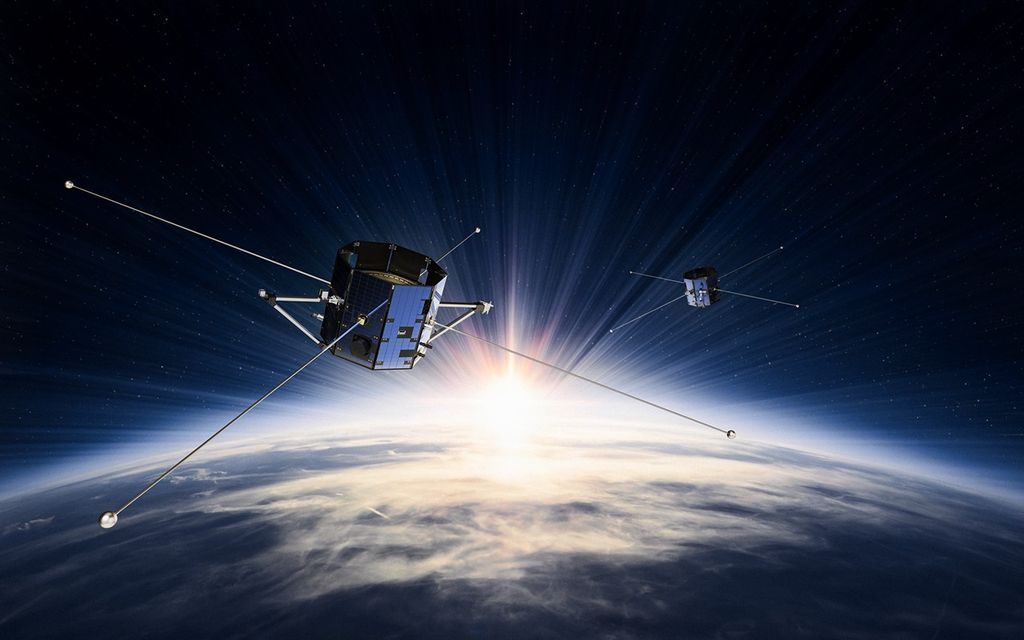NASA has selected 14 U.S.-based researchers to join the Ultraviolet Transient Astronomy Satellite (ULTRASAT) science team. The selected U.S. ULTRASAT Participating Scientists will pursue science investigations that will contribute to Israel’s first space telescope mission which is planned to launch into geostationary orbit around Earth in 2026. Proposals were submitted in response to ROSES 2022: Ultraviolet Transient Astronomy Satellite Participating Scientists.
“The US science community responded to this opportunity with an excellent set of proposals, and we are very pleased to have a group studying such a wide variety of creative science,” said James Rhoads, the NASA Project Scientist for ULTRASAT.
ULTRASAT will be an ultraviolet (UV) observatory with a 204-square-degree field of view, which is dramatically larger than the other operating UV satellites. It will investigate the secrets of short-duration events in the universe such as tidal disruption events, supernova explosions, and mergers of neutron stars in binary systems.
Through an agreement between NASA and the Israel Space Agency (ISA), NASA will launch the space telescope, provide the Flight Payload Adapter, and participate in the mission’s science program. The NASA Participating Scientist program results from an implementing arrangement between ISA and NASA and an agreement between the ULTRASAT team and the Vera Rubin Observatory, which is funded by the National Science Foundation and the Department of Energy. The Israeli Aerospace Industry, Elbit/Elop, DESY, and the Weizmann Institute of Science (WIS) have also partnered on the development of the mission.
“We welcome the U.S.-based scientists selected by NASA to join the ULTRASAT science team. It is a strong addition to the collaboration, and we look forward to their contributions to the exciting science ULTRASAT will explore,” said Eli Waxman, principal investigator of ULTRASAT from the Weizmann Institute in Israel.
The U.S. ULTRASAT Participating Scientists include 14 investigators from 13 institutions in 10 states. One of these researchers, Dr. Tahina Ramiaramanantsoa, is a first-time principal investigator for a ROSES project. In total, around $2M will be awarded in fiscal years 2023-2025, with a second round of Participating Scientists to be selected competitively in 2026.
Dr. Thomas Barclay, SETI Institute (Mountain View, California), moving to NASA’s Goddard Space Flight Center (Greenbelt, Maryland)
Investigating The Impact Of Stellar Activity On Exoplanets Using Data From TESS And ULTRASAT
Dr. Dennis Bodewits, Auburn University (Auburn, Alabama)
Mapping Cometary Water Production Rates Throughout The Solar System
Dr. Stephen Cenko, NASA Goddard (Greenbelt, Maryland)
The Diversity and Ubiquity of Relativistic Jets
Dr. Michael Coughlin, University Of Minnesota (Minneapolis)
An ULTRASAT Sample Of Early Time UV Emission From Kilonovae
Dr. Tansu Daylan, Washington University (St. Louis)
Empowering ULTRASAT’s Legacy On Planetary Habitability: A Survey Of Stellar Flares And Space Weather Beyond The Solar System
Dr. Suvi Gezari, Johns Hopkins University (Baltimore)
Harnessing The Power Of The High-Cadence UV Time Domain To Identify Tidal Disruption Events From Intermediate-Mass Black Holes
Dr. Anna Ho, Cornell University (Ithaca, New York)
An ULTRASAT Census Of Fast UV-Luminous Cosmic Explosions With Relativistic Ejecta
Dr. Erin Kara, Massachusetts Institute of Technology (Cambridge, Massachusetts)
AGN & TDE Variability In The ULTRASAT Era
Dr. Mukremin Kilic, University Of Oklahoma (Norman)
Stellar Astrophysics with Ultrasat
Dr. Tahina Ramiaramanantsoa, Arizona State University (Tempe)
Science Data Reduction and Analysis Pipeline for ULTRASAT
Dr. David Sand, University Of Arizona (Tucson)
Early Supernova Observations from ULTRASAT and Supporting Observations
Dr. Keivan Stassun, Vanderbilt University (Nashville, Tennessee)
Stellar Activity, Accretion, And Chronometry In The UV
Dr. Daniel Stern, Jet Propulsion Laboratory (Pasadena, California)
Extreme AGN Variability with ULTRASAT
Dr. Ann Zabludoff, University Of Arizona (Tucson)
Rapid Classification of ULTRASAT Astrophysical Transients for Follow-Up and First-Principles Modeling of ULTRASAT Tidal Disruption Events
























